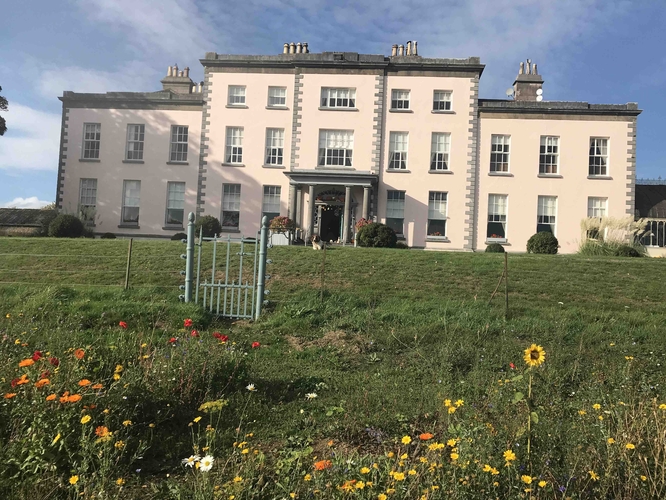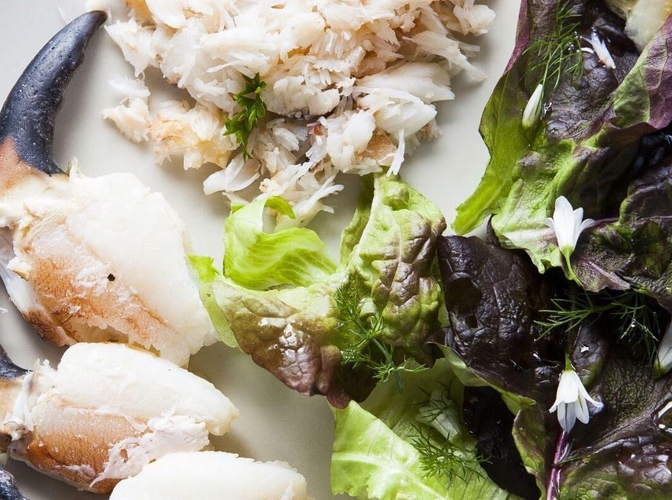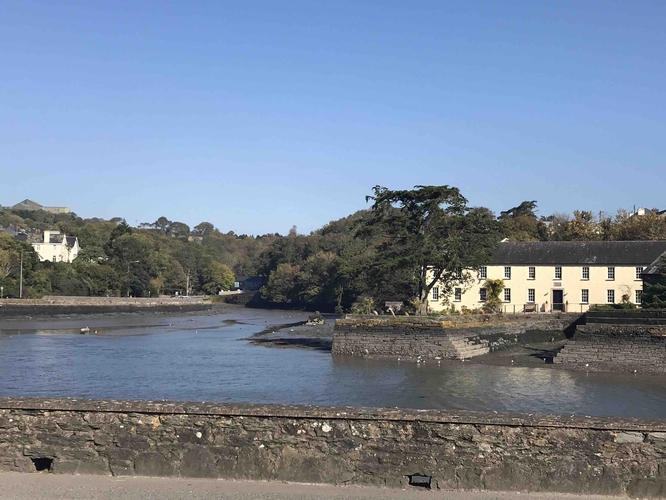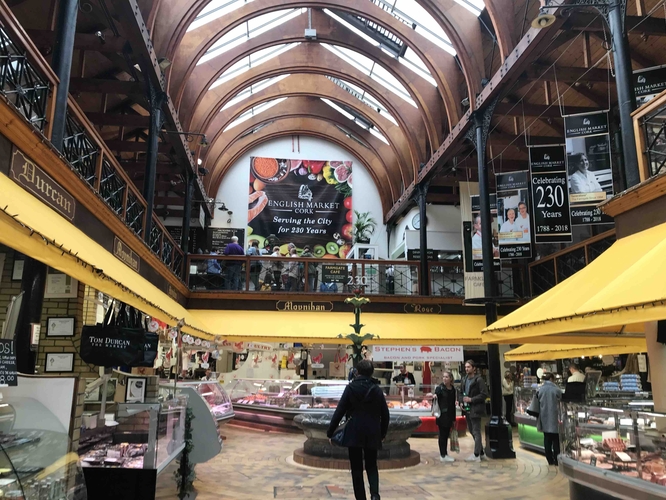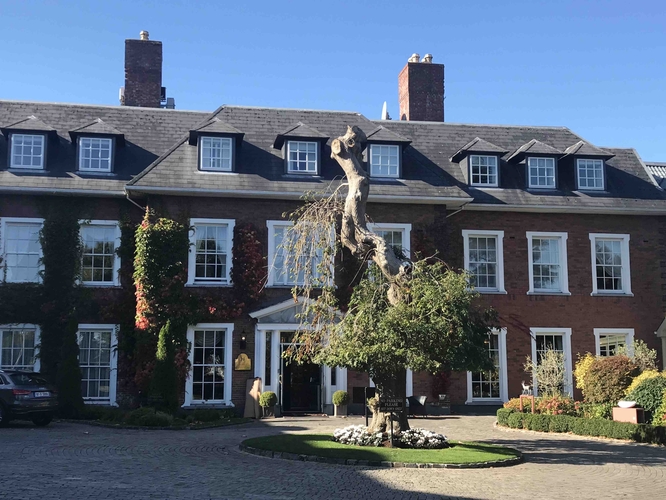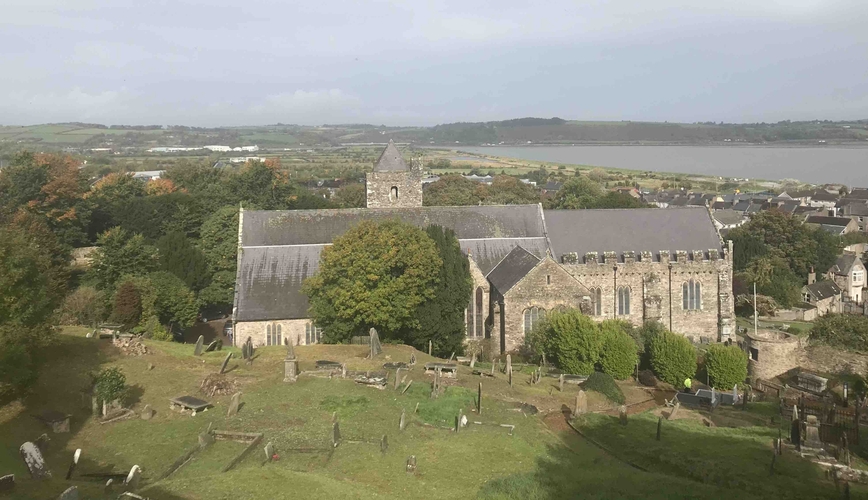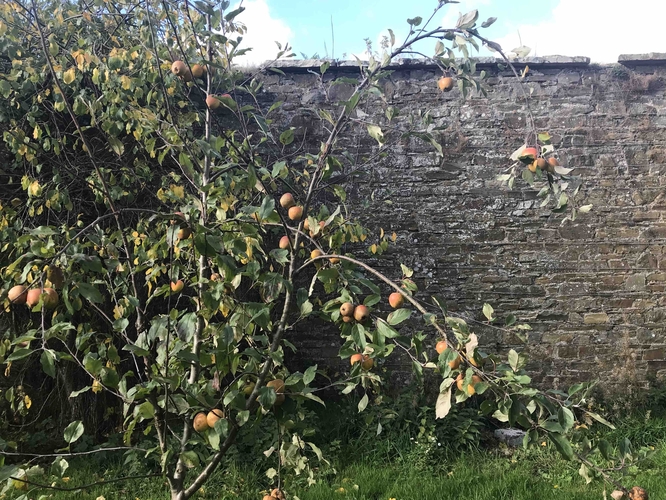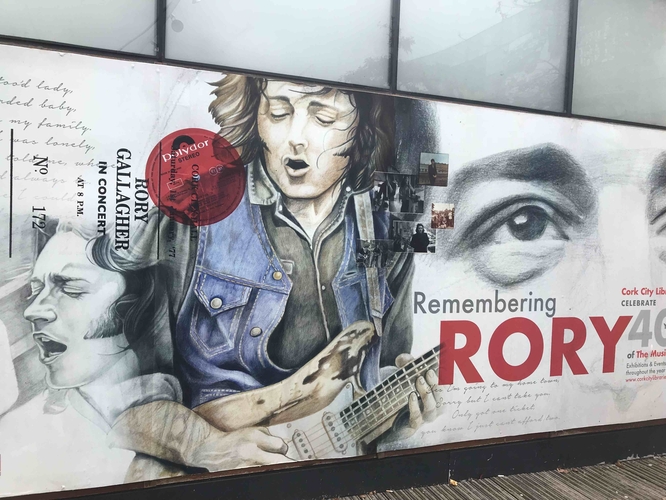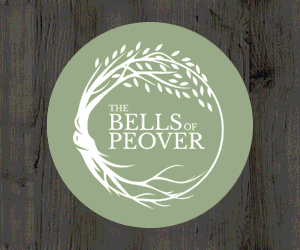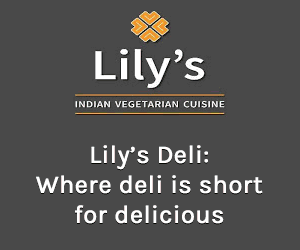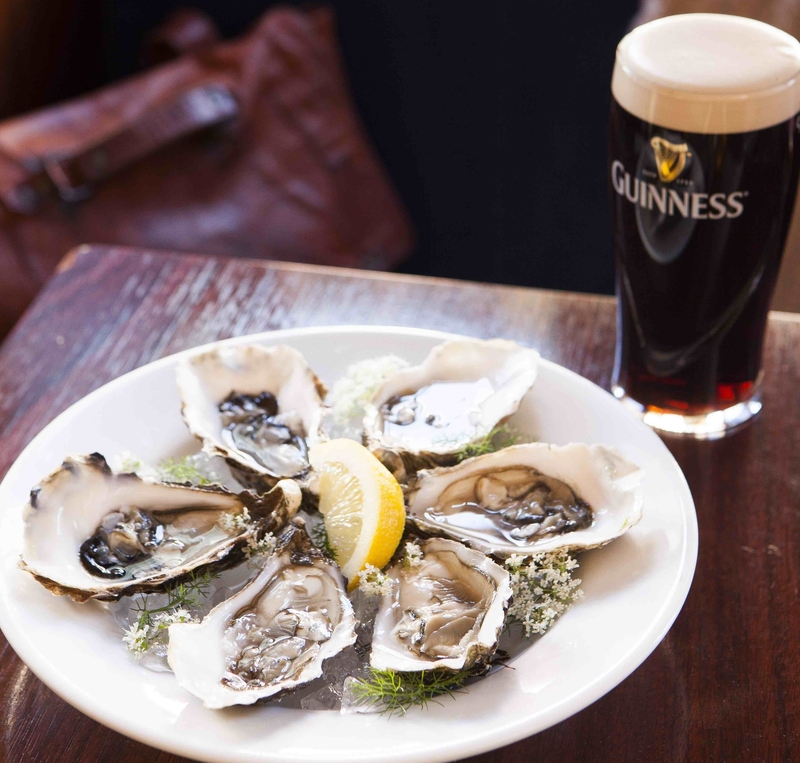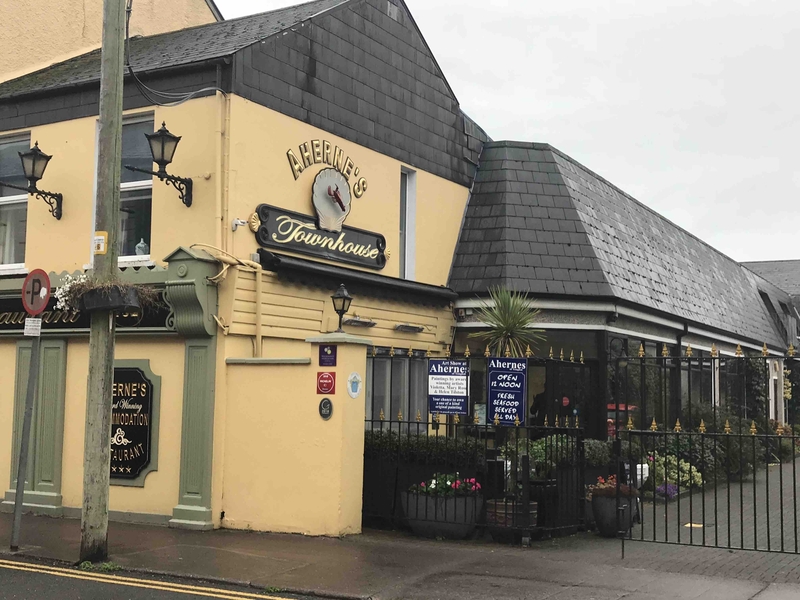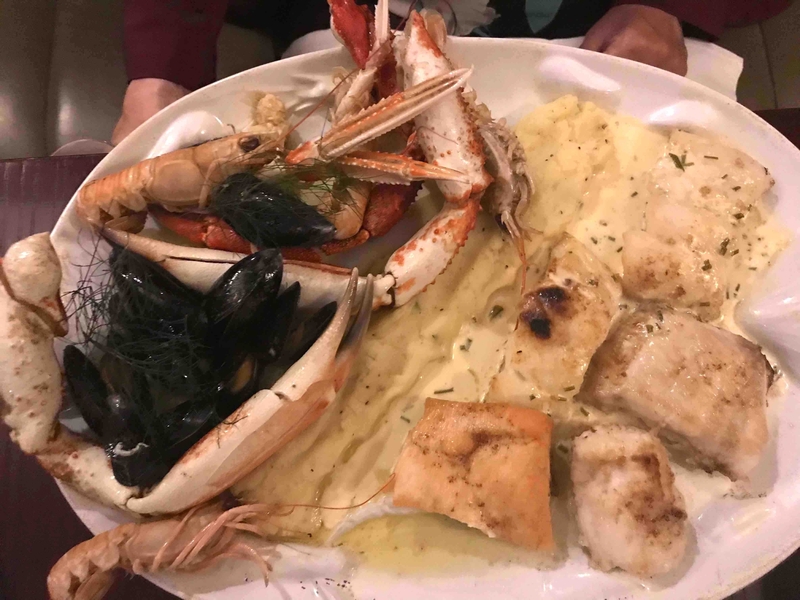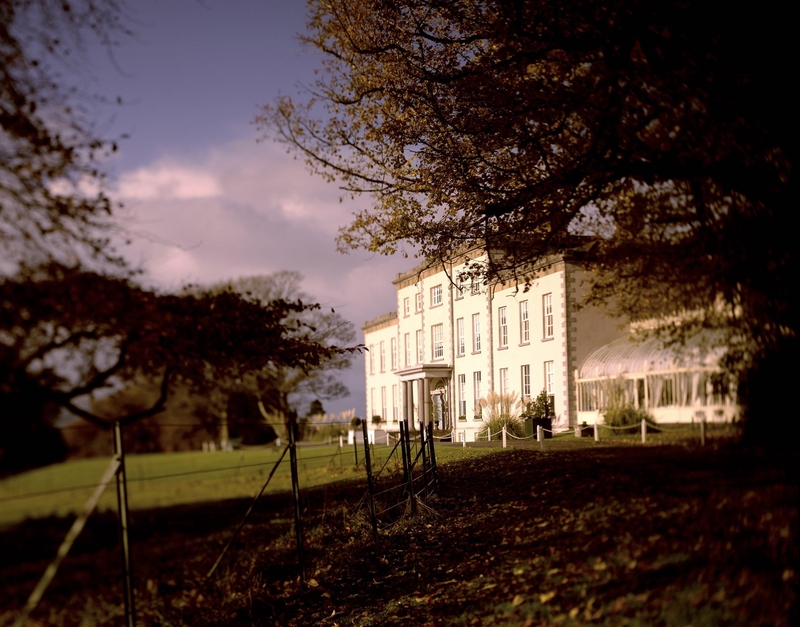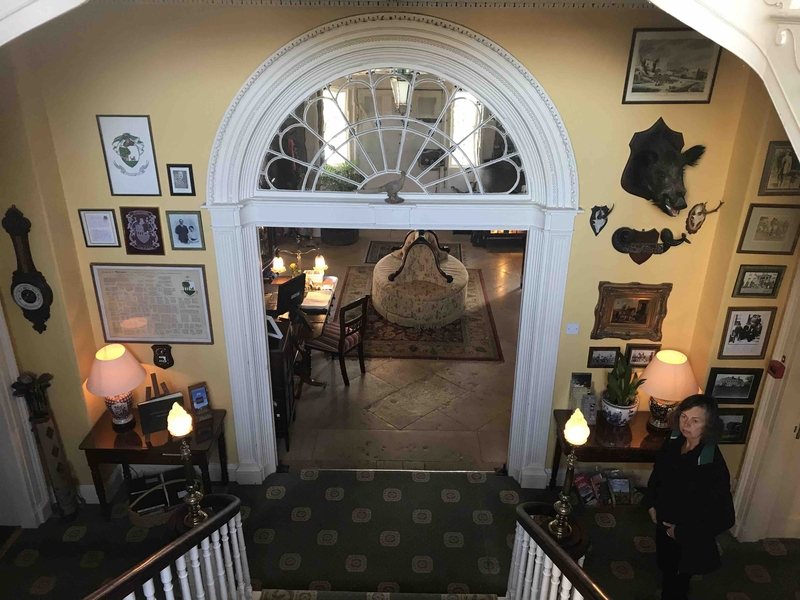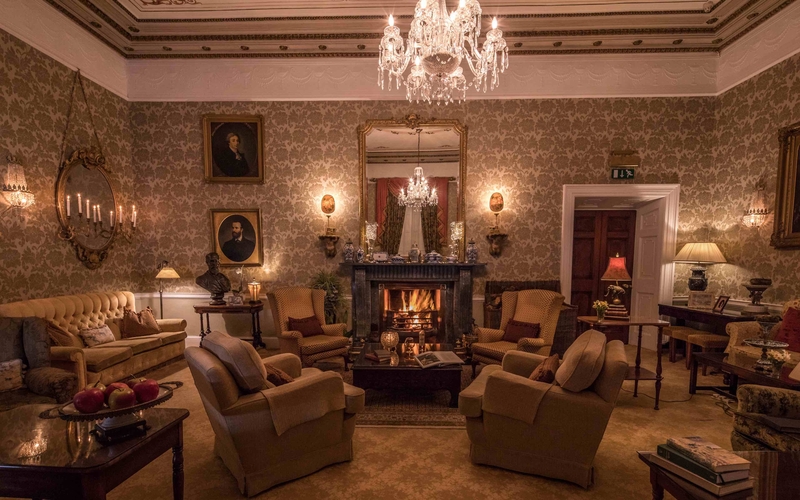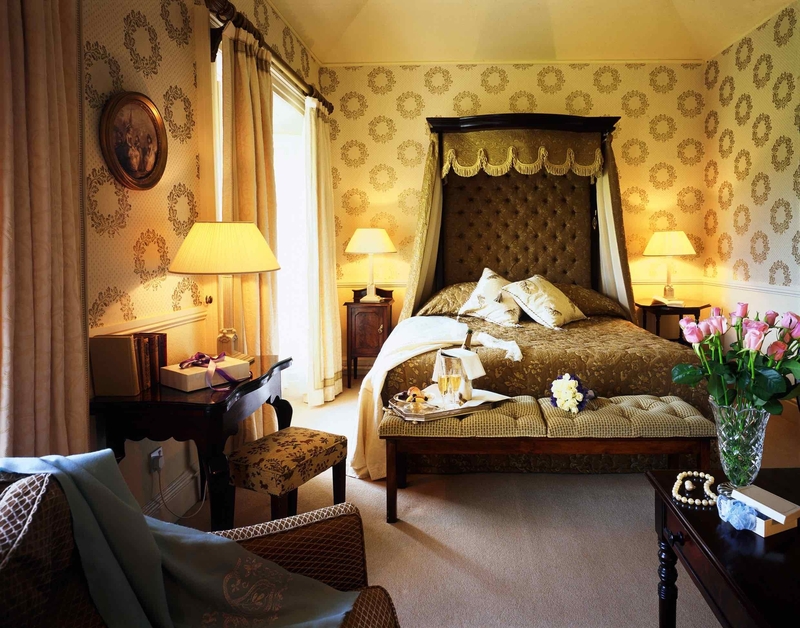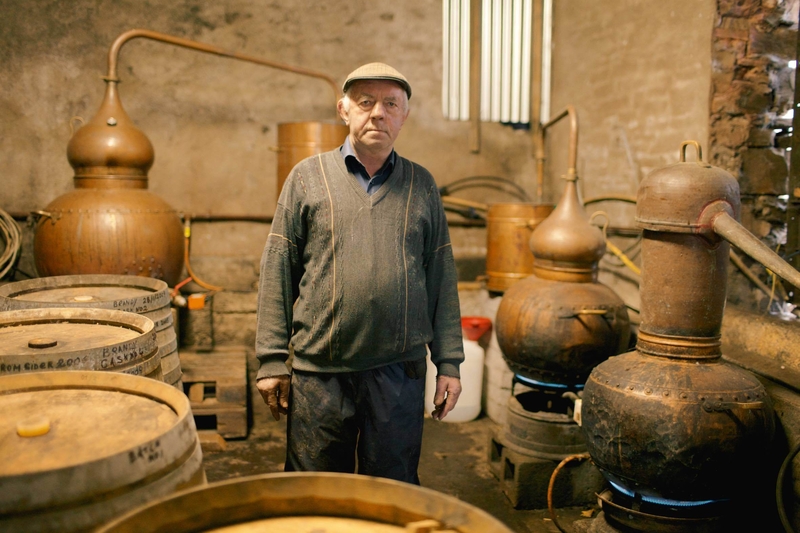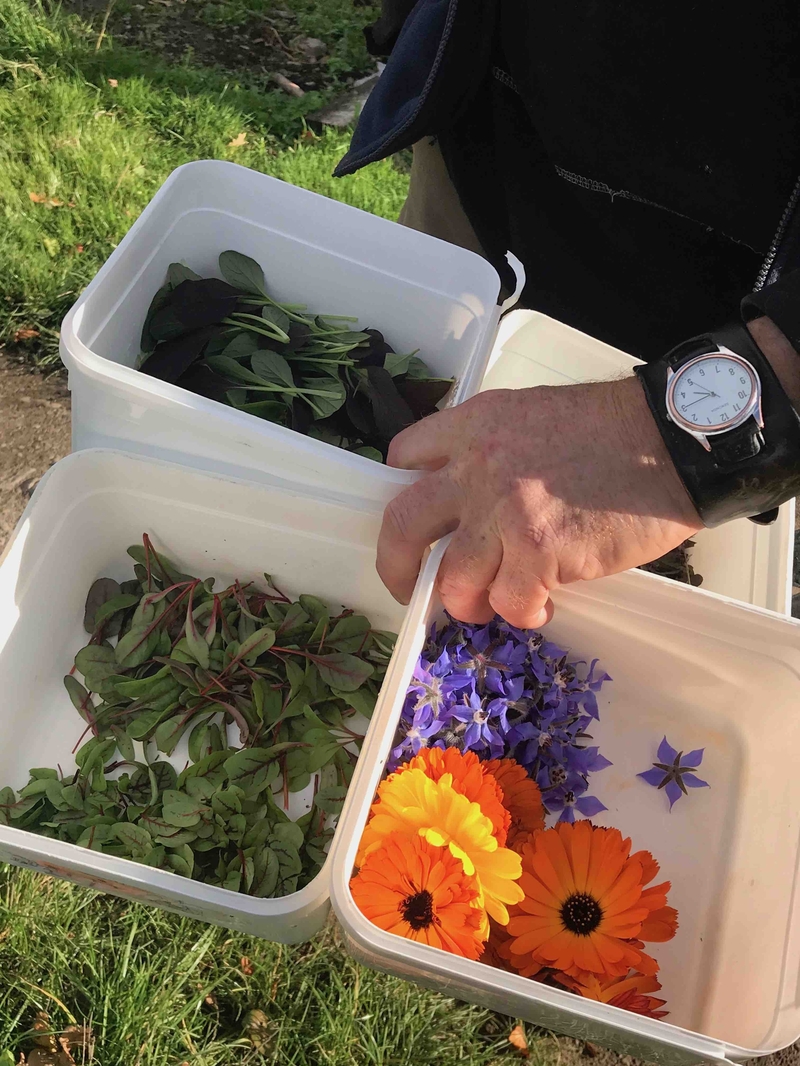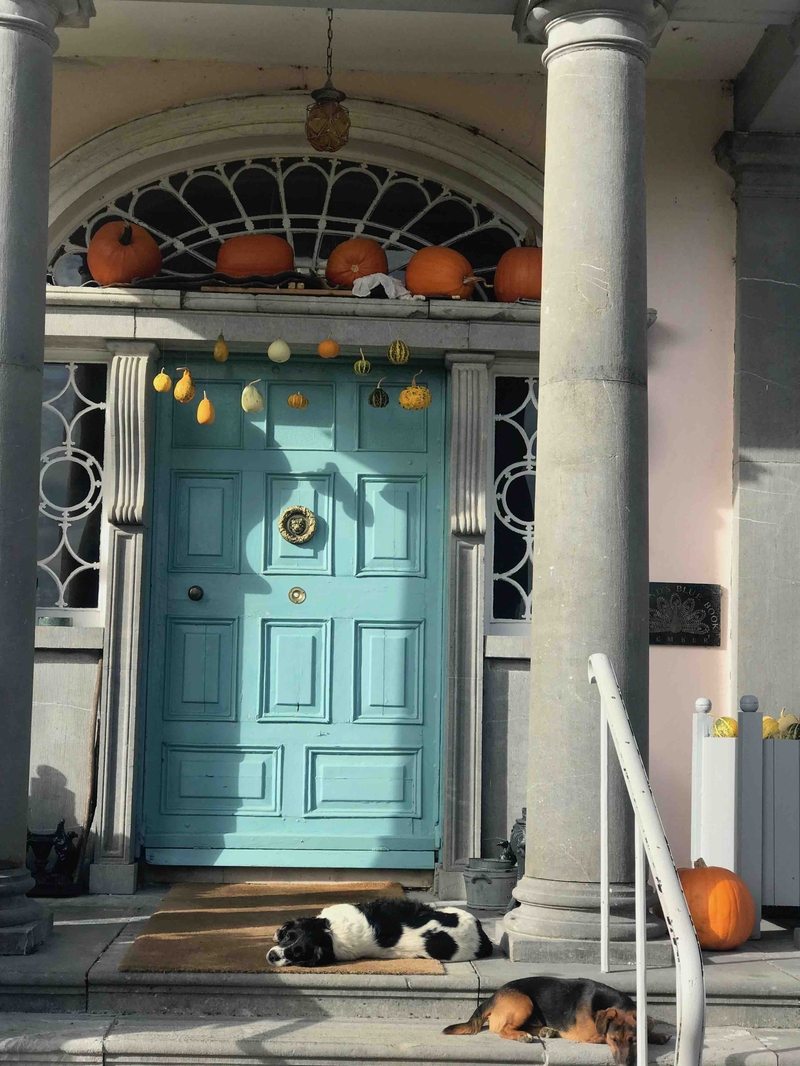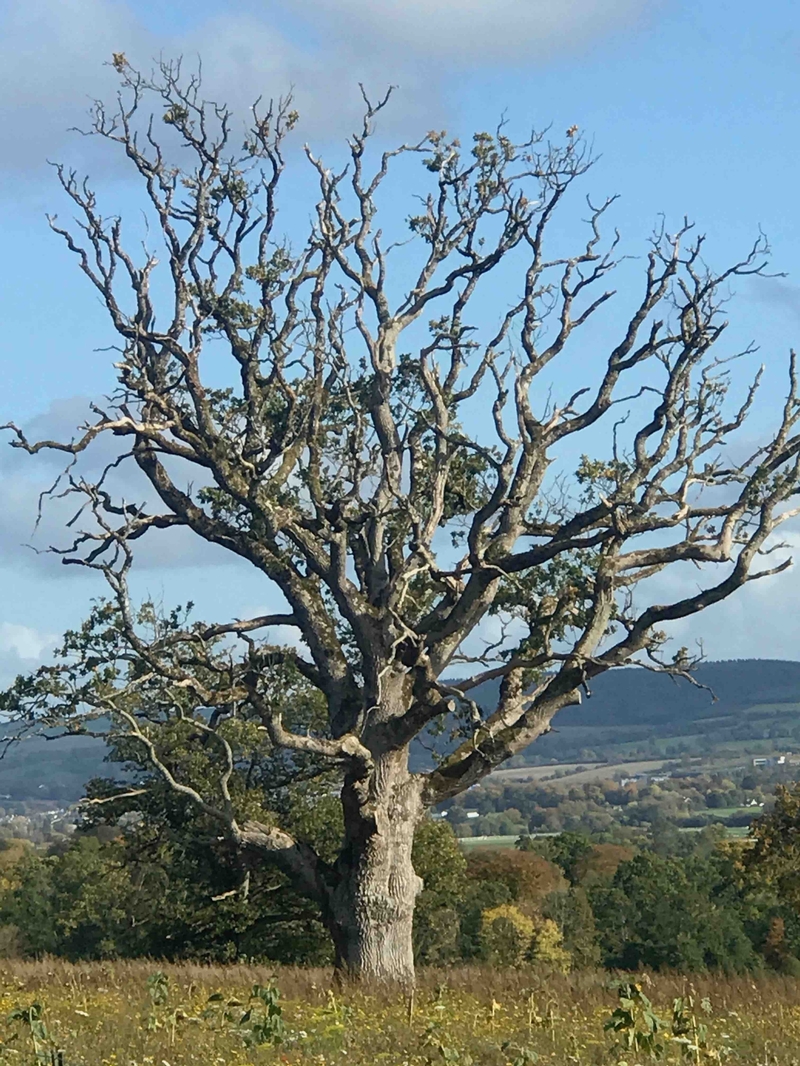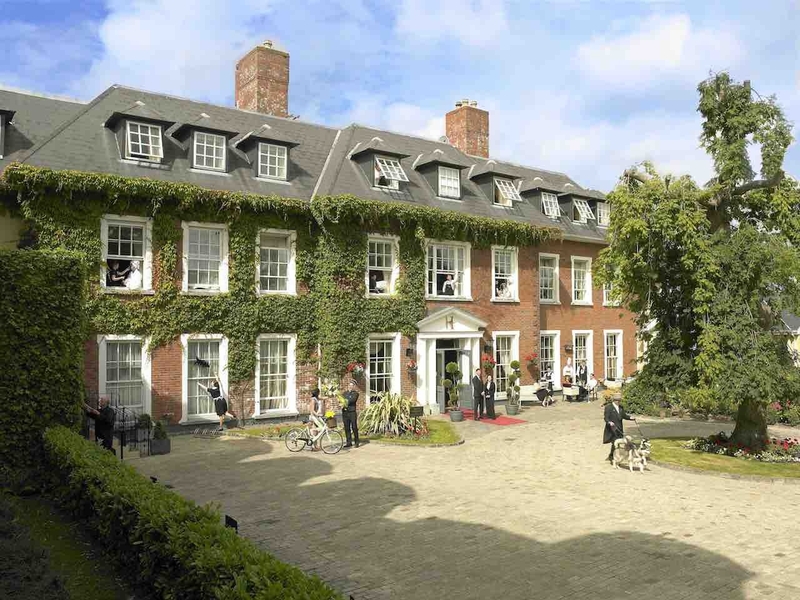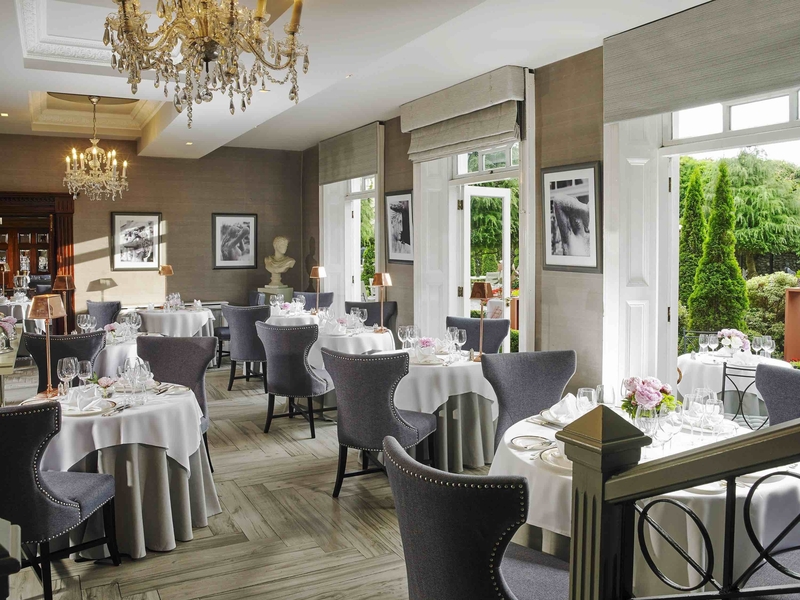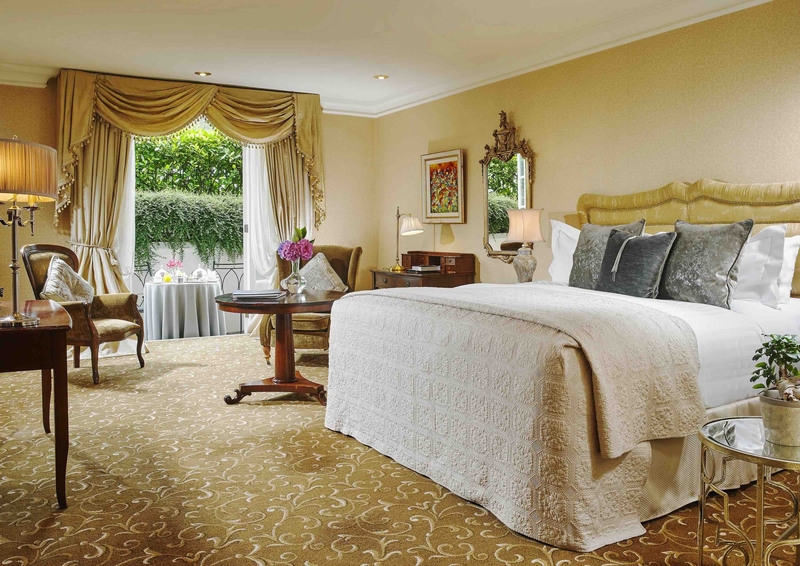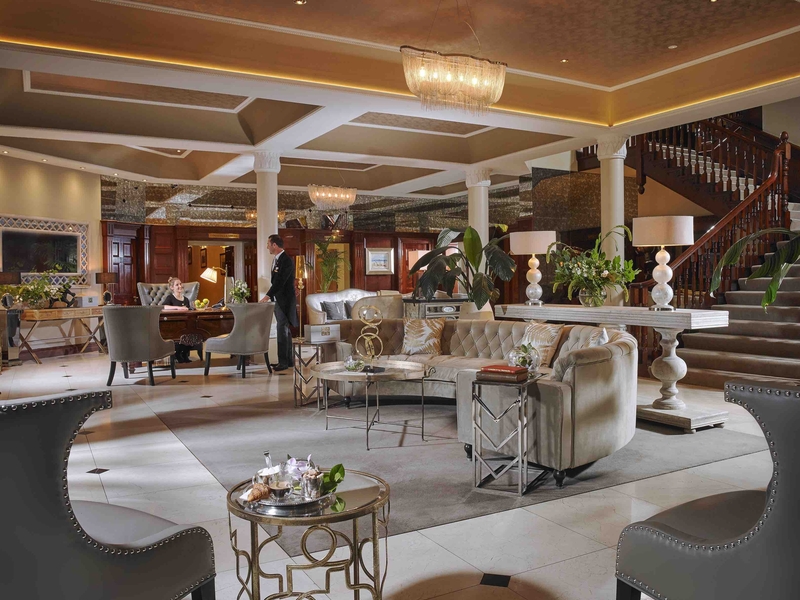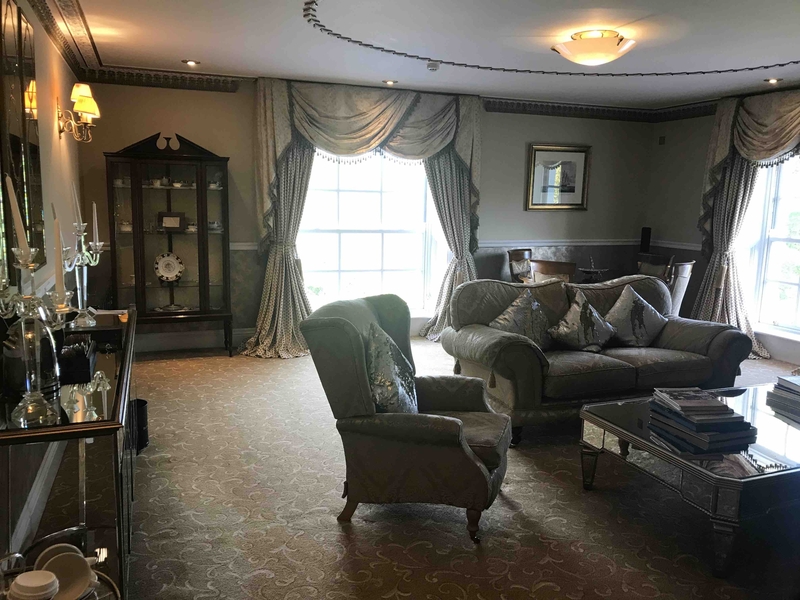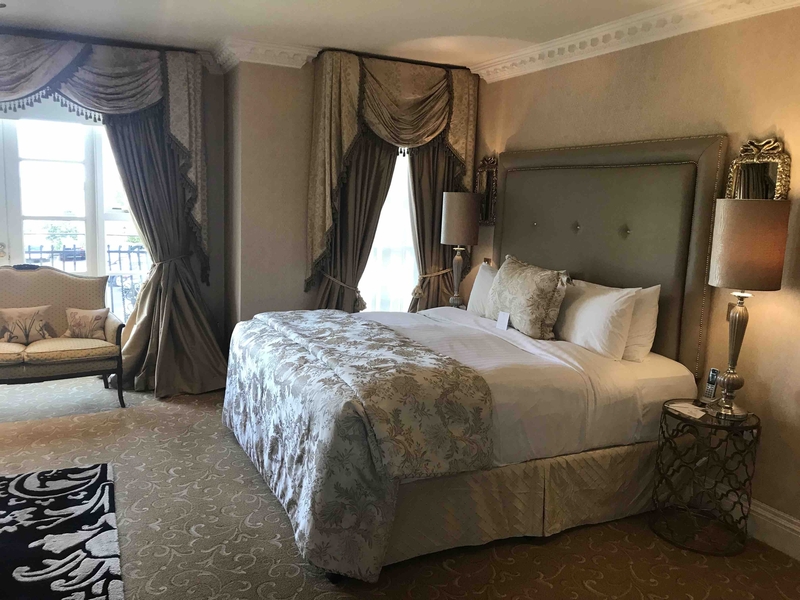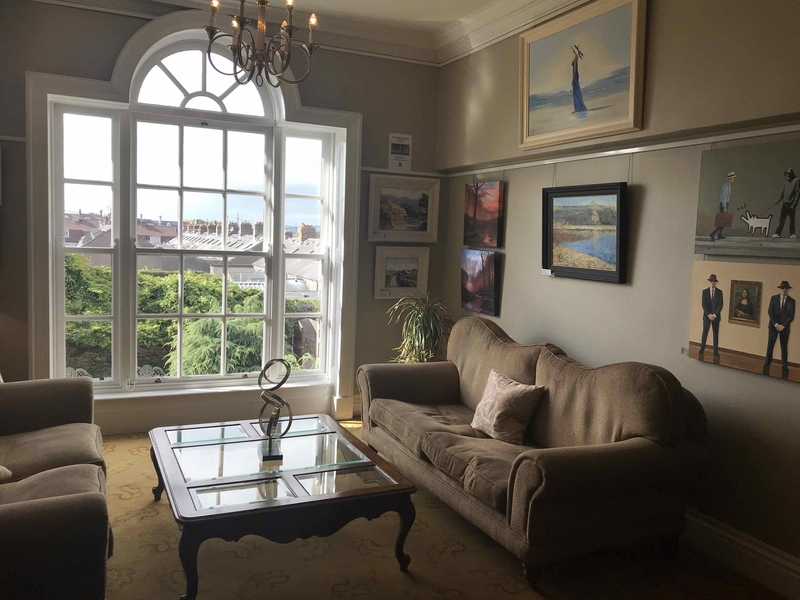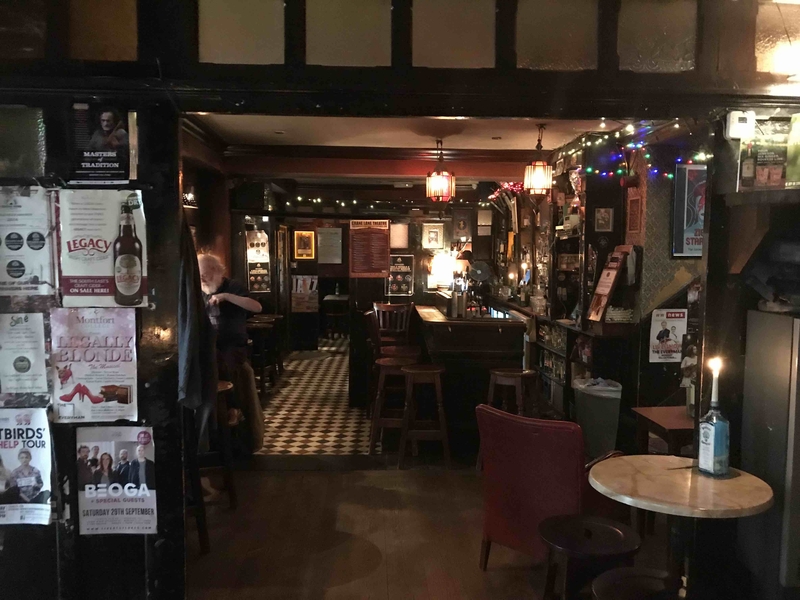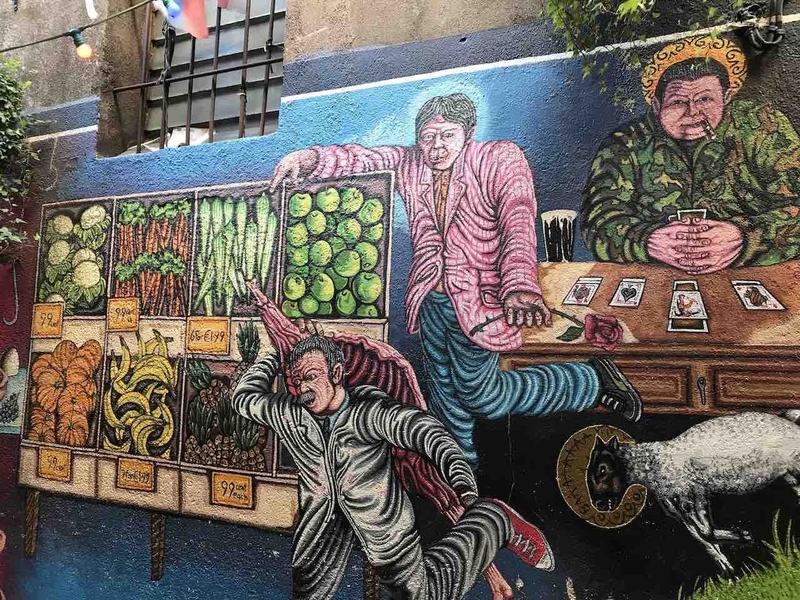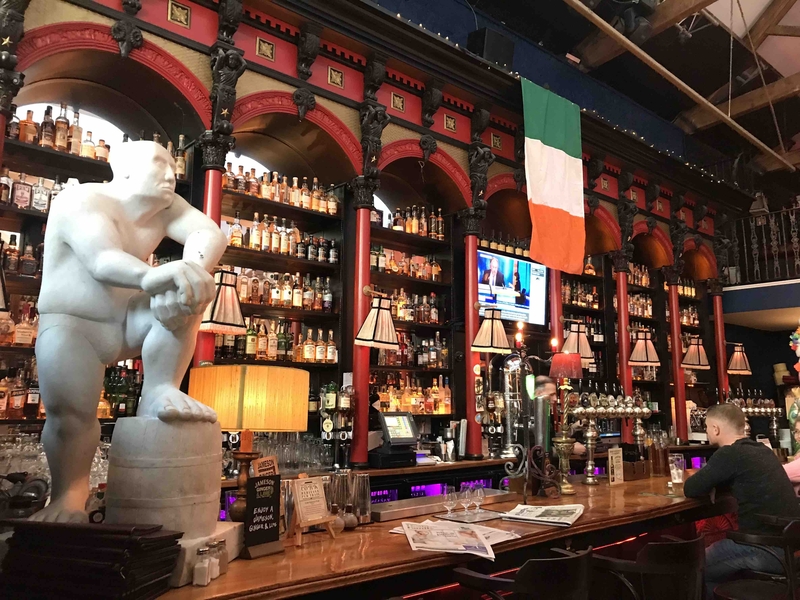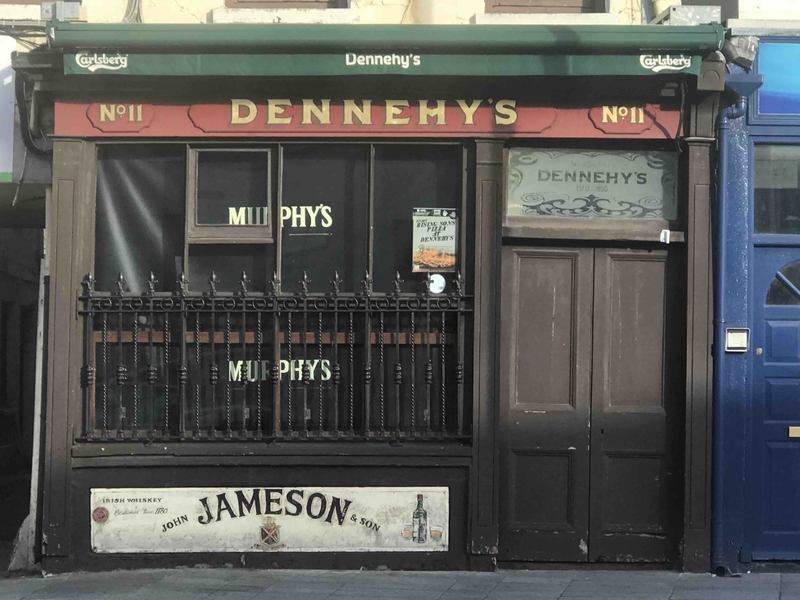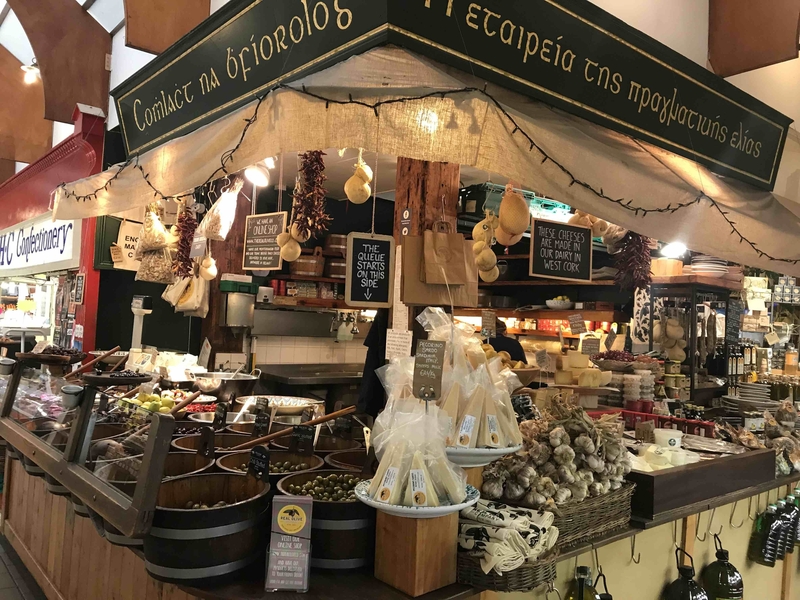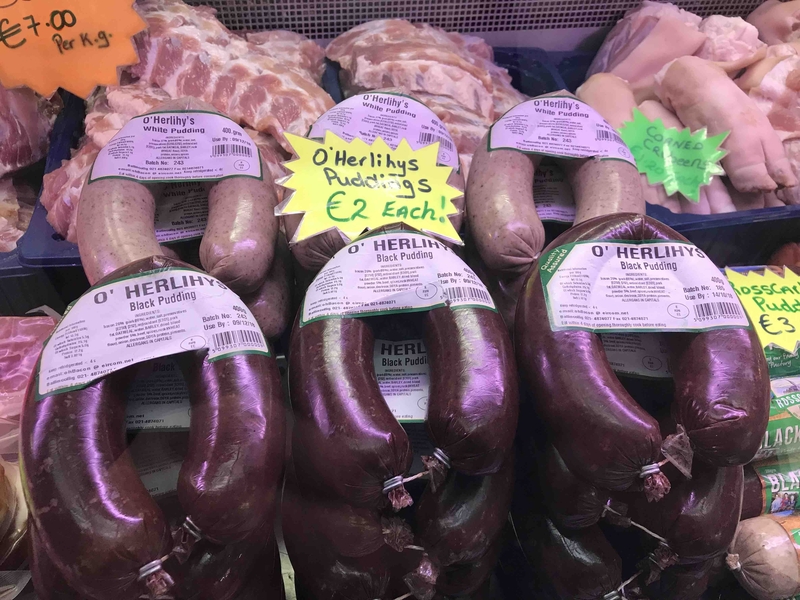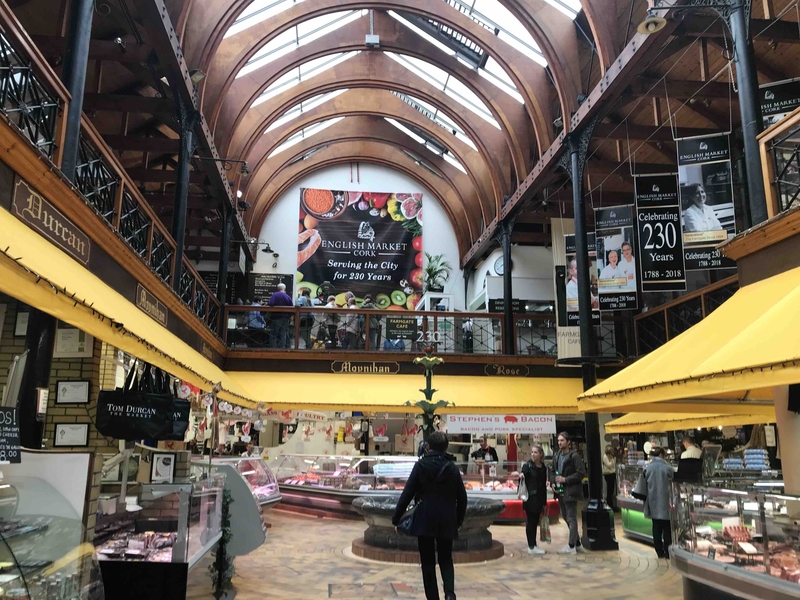Neil Sowerby enjoys a laidback trio of Ireland’s Blue Book lodgings
A SLY afternoon Guinness felt in order after a busy morning exploring the rich heritage of Youghal, County Cork. So we ensconced ourselves in Treacy’s Bar. Beyond cosy, but surely they could open the curtains to let the soft coastal light in? “Oh, it’s out of respect for a funeral cortege from St Mary’s that’ll be passing by shortly. One of our regulars, a lovely fellow, taken from us too soon.”
The Dowager Countess of Desmond.… legend has it she he died in 1604, aged 140 (having regrown a full set of teeth), after a fall from a cherry tree.
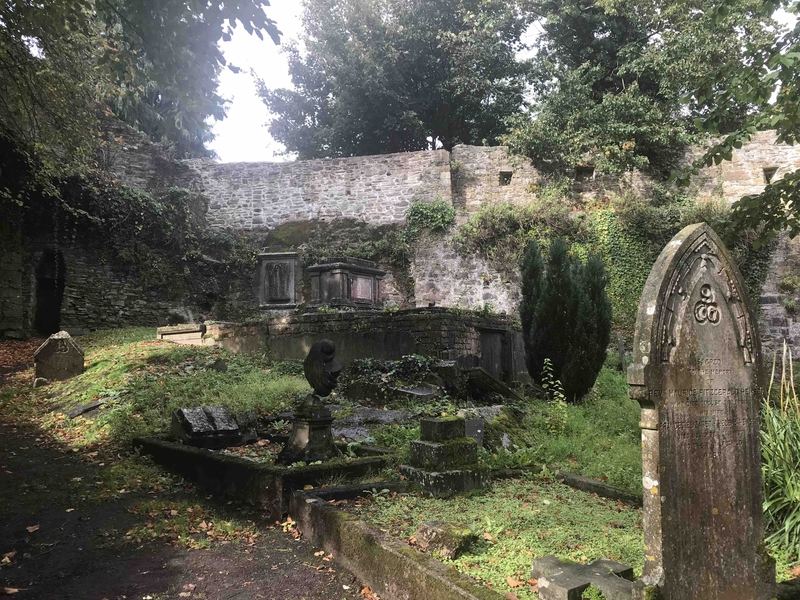
We toasted your man with the dark stuff and pondered the oddness of this town being home to two churches, both St Mary’s, less than 400 yards apart. One, of course, is the Catholic Parish Church hosting the day’s funeral, the other the 13th century St Mary’s Collegiate Church, claimed to be the oldest place of continuous worship in Ireland. Church of Ireland, bastion of English Protestant rule, it sits cheek by jowl with the Warden’s House (privately owned and known as Myrtle Grove), once home to Sir Walter Raleigh when he was Town Mayor.
The prosperous English settlers built their grand houses inside Youghal’s medieval walls. Today, well preserved, they still afford magnificent views across the wide Blackwater Estuary. And this is just an overview. The Collegiate Church and the iconic Clocktower Gate – which separated the incomers from the poorer native ‘Irishtown’ – are treasure troves of historical and social significance, well worth a visit.
And to think we’d only come to Youghal (pronounced Yawl), on a late detour, for the fish. Specifically to Ahernes, booked via Ireland’s Blue Book, a stylish, characterful collection of country house hotels, manor houses, castles and restaurants.
Ahernes, itself nearly a century in existence, styles itself as ‘Seafood Restaurant and Accommodation’, which is probably the correct emphasis – the rooms tucked away in a courtyard off Main Street are boutique homely, but it is the locally landed seafood that really sings, treated unfussily and served with a rare warmth by the Fitzgibbon family in both the dining room and the bar.
We’d suggest you share the €34 Hot Seafood Selection, featuring salmon, cod, monkfish, hake and brills in a chive sauce alongside prawns, oysters and mussels cooked with wine, garlic and olive oil. To partner this feast order a Hugel Riesling from Alsace from a wine list full of bargains. Of course, a Guinness and a dozen native oysters might suffice.
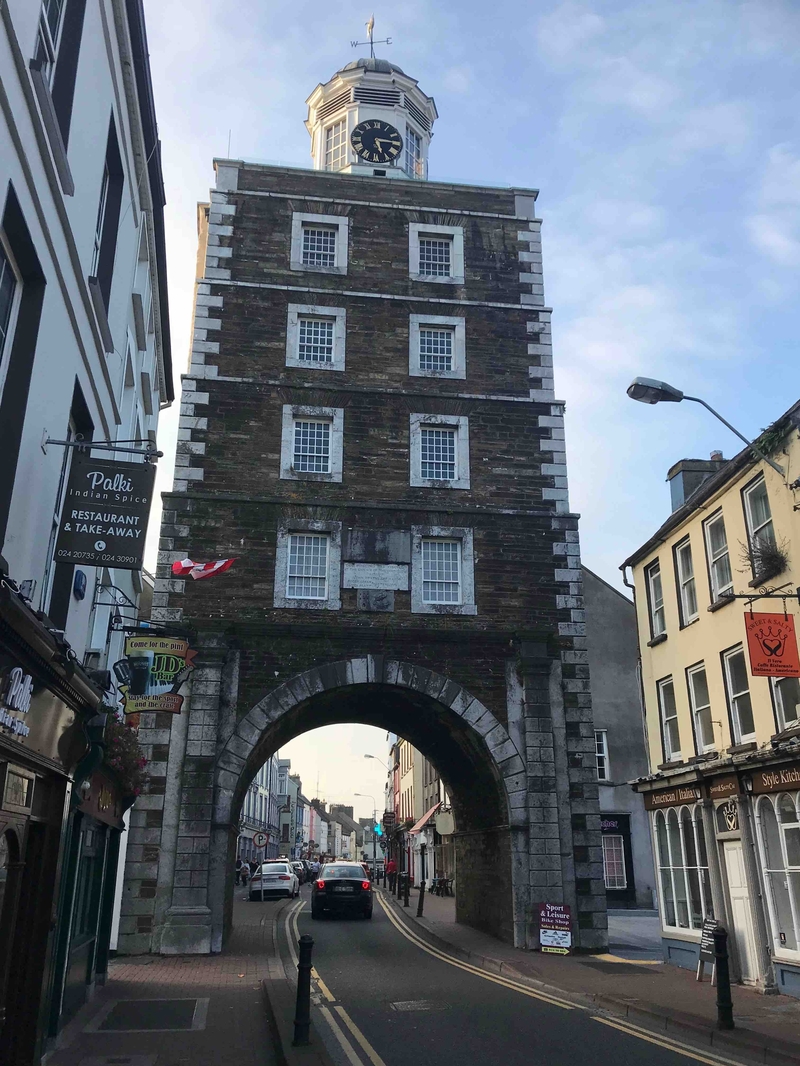
David Fitzgibbon kindly arranged tours of both the Clock Tower and the Collegiate Church for the next morning. The first, transported us vividly from the site’s 14th century origins as a Walled Town fort, through its rebuilding as a grim gaol in 1777 through to the 20th century occupants of its draughty storeys. Beautifully recounted social history from a volunteer storyteller.
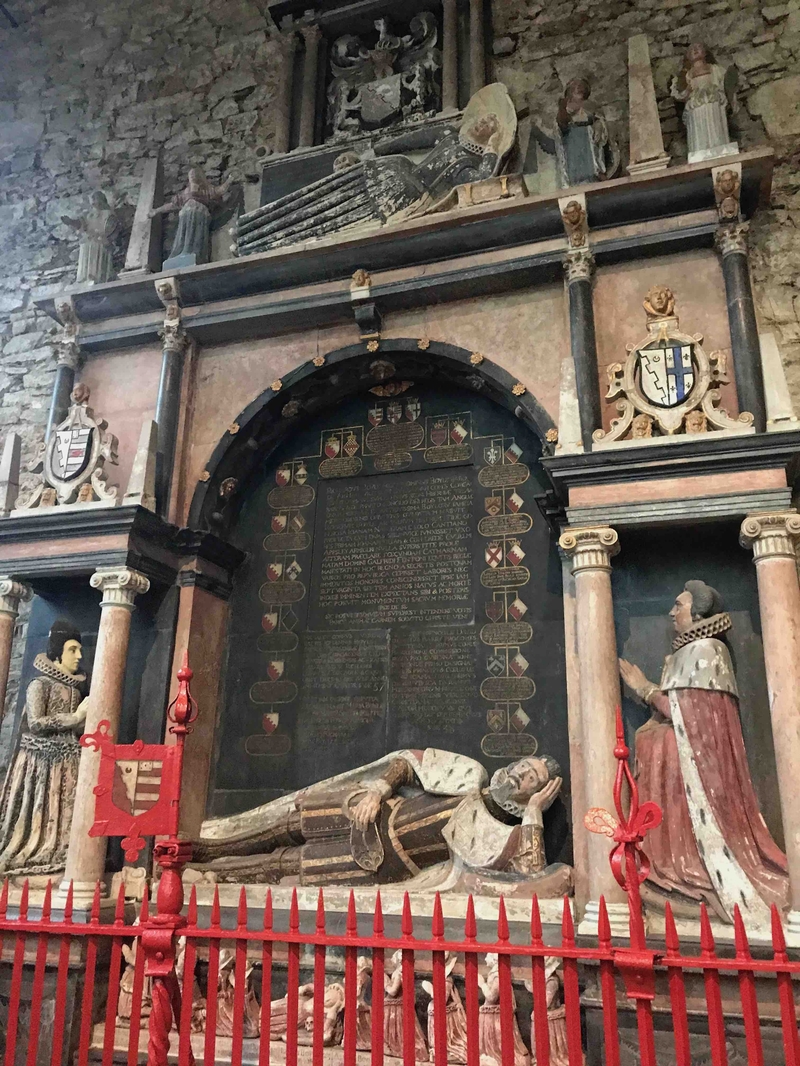
We made two private trips around the Collegiate Church, there was so much to explore. We loved the monument to Richard Boyle, the first Earl of Cork, who died in Youghal in 1643. Two wives, his mother and nine of his 15 children join him in an astonishing ensemble, which cost over £500, a fortune in those days.
Without the fame of Raleigh whose estate he bought for a comparative song, the eventual Earl of Cork and Lord Treasurer of Ireland certainly cut the mustard as a self-made Jacobean adventurer/entrepreneur.
The only property Raleigh retained in Ireland was nearby Inchiquin Castle (today a ruin), let for life from the Dowager Countess of Desmond. Legend has it she he died in 1604, aged 140 (having regrown a full set of teeth), after a fall from a cherry tree. Ireland’s full of tall tales. As a girl she was supposed to have danced with Richard III before his death at the battle of Bosworth. You do the sums.
Turbulent history continued to dog Youghal and its church. A few years later Oliver Cromwell wintered his troops in this strategic port, more important than Cork’s, en route to quell a rebellion. He is said to have preached a funeral oration to one of his officers standing on a trunk, still there in the Collegiate sanctuary.
This is only scratching the surface of the church’s riches and the rest of the walled town offers almshouses, merchant’s mansions and plenty more. A revelation. Even the many empty shops are housed in rather grand buildings, proof of Youghal’s commercial heyday, now long past.
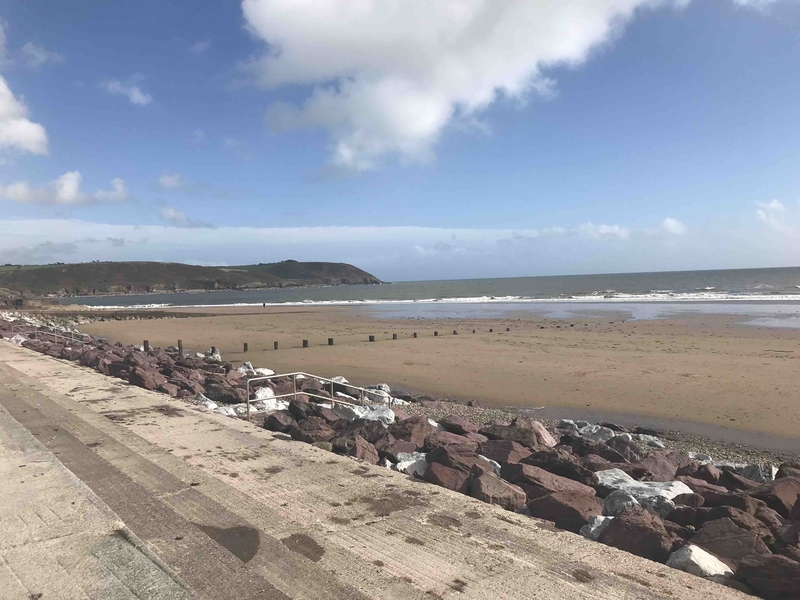
Surprises abound. Stray the other side of the Clock Tower Gate – Main Street passes through it – and you’ll eventually come to the vast sandy beach that made Youghal a popular seaside resort, reached from Cork City by train.
My wife’s mother, whose father worked for the railways and so got free travel, often came here as a girl on a Sunday jaunt and never once stepped into the Walled Town.
For sentimental reasons we strolled hand-in-hand across the bracing strand before departing for our next Blue Book destination, Longueville House, just 50 miles to the North West.
This listed 1720 country house, lovingly maintained by the O’Callaghan family, is in high, rolling country beyond Mallow with sweeping vistas of he Boggeragh Mountains. The only connection with Youghal is that same Blackwater River (known as the Munster Blackwater to differentiate it from the Northern Ireland river of the same name). Rising in Kerry, it flows over 100 miles east and then doglegs south to the sea at Lismore, whose Castle is the Irish home of the Duke of Devonshire. Only the gardens and gallery are open to the public but worth a look.
Longueville has fly fishing rights along a stretch of the Blackwater, famed for its salmon and brown trout. While exploring the 500 acre wooded estate we wandered down there but, in truth, we were more captivated by the orchards, from whose heirloom apples the family make their own LH cider plus Ireland’s only apple brandy.
Having viewed the still (they run tours) and met Dan Duggan, their veteran distiller (teetotal all his life), we eagerly accepted the invitation to sample the brandy in the drawing room before dinner. It was smooth and sumptuous and so was the meal that followed – cooked by Longueville owner William O’Callaghan, whose late father Michael diversified into apple-led drinks when the Irish climate proved inclement for his pioneer winemaking.
As one of Ireland’s top chefs, William benefits from a rich bounty of raw materials from their walled gardens and we suspect the toothsome ham at breakfast came from the free range pigs we encountered in our rambling.
The house itself, is glorious inside and out and we particularly loved how they had given the meadow in front up to wild flowers, all part of the sustainable ethos of the new O’Callahan generation. It’s obviously a labour of love for William, his wife Aisling and his mother Jane, who first opened Longueville House as a lodging in 1979.
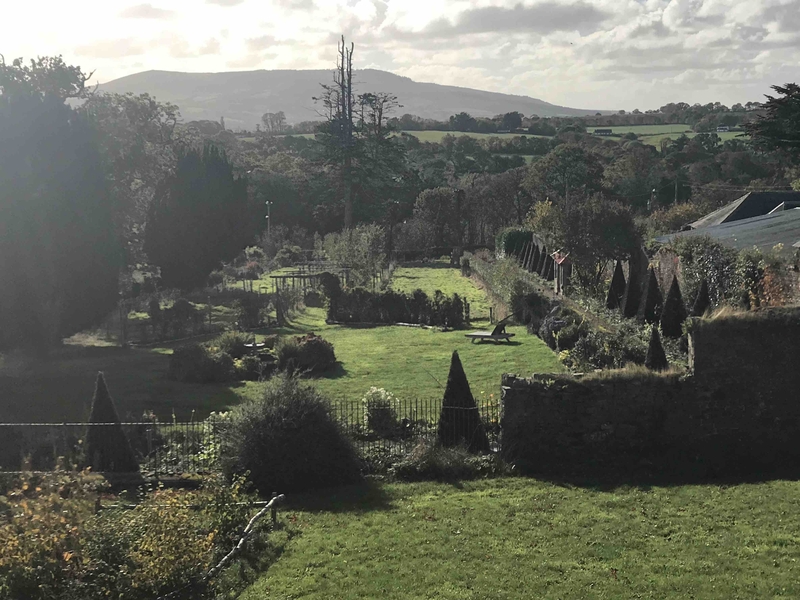
It’s a cliche to say that it felt more like a country house party than a hotel. Just 20 bedrooms, both quirky and luxurious. Our room overlooked a long garden we pondered might once have sheltered those poor, doomed vines. Resident dogs romped around or snoozed in the grounds. We woke to birdsong.
Our stay also coincided with the local priest’s annual visit to bless the house, local folk invited for the reception; the next day a Far Eastern delegation had booked in for a discreet conference – given the Chinese Room naturally, a private dining space that’s a riot of Victorian chinoiserie. Irish country house stays don’t get more fun than this.
This isn’t a quirky domain in the countryside with dogs and pigs. It’s a five star Cork city luxury hotel with 16 metre pool and spa, a restaurant called Orchids whose servers simultaneously lift cloches at dinner to reveal (rather accomplished) mains and the concierge wears a top hat and uniform that wouldn’t be out of place in Mayfair. Yet, guess what – it’s as warmly welcoming as the other two Blue Book establishments on our road trip.
Tucked away behind the august quadrangles of University College Cork, 15 minutes’ walk from the city centre, Hayfield has a historic feel, too, but that is deceptive. Originally a merchant’s house, it only became a hotel in 1996 when serial hoteliers the Scally family took over the manor and rebuilt it in an appropriate period style – the main staircase is a replica of the original – while incorporating luxury modern amenities. The grounds and trees, including a centrepiece weeping willow, are over 150 years old.
We got upgraded to the Master Suite, a lavish series of interconnecting rooms, including ‘his and hers bathrooms’. I kept getting lost (the sheer thought of how much all this luxury might have cost was distracting). Huge Georgian style windows overlooked both the hotel’s front gardens and a walled garden at the back, inspired by Muckross House gardens in Killarney.
My wife was full of praise for her Elemis treatment in the Beautique Spa and it was tempting to stay to afternoon tea, but Cork called and refreshment of a different sort at The Mutton Lane Inn.
From the outside, this hostelry in a mural-daubed alleyway next to the city’s famous English Market might just be any traditional Irish pub, like Dennehy’s nearby, serving either the Murphy’s or Beamish stout, Cork’s answer to Guinness.
Instead you’ll get a barman with a beard pulling acclaimed craft beer from local microbrewery Rising Sons, whose own tap round the corner is more of a cavernous sports bar. Candlelit even in daytime, Mutton Lane is much cosier and a place to catch a traditional music session.
A contender for Cork city’s oldest pub, it used to be the stop-off for drovers herding their sheep to market. The only trail it’s on these days is the Cork Heritage Pub Trail, whose tour roster also includes the spectacular not-to-be missed Whiskey Bar at Bodega on Cornmarket Street, good for the grub, immense for the grain.
The English Market has always been a magnet for us on trips to Cork. The Protestant (or English) corporation established it in 1788; when Irish Catholic representatives took control of the city in 1840 they created a separate Irish Market in the building that is now the Bodega (above). In decline, it was narrowly saved form demolition in the Seventies, then was restored after a fire in 1980, after which the foodie adventure began with specialist artisan traders, often with a European background, selling cheeses, olives and street food alongside traditional market operators selling white and black pudding, offal, and fish. Rick Stein called it the best covered market in the UK and Ireland.
We sensed on this visit some of that excitement had dissipated. The most enticing deli stall seemed to be up for sale. Still it was a delight to ascend to the indispensable Farmgate Cafe to share a chowder and a sandwich wedge of pickles and spiced beef sourced from Tom Durcan’s below on the parade. Farmgate’s tripe and onions was a taste sensation too far in a market still boasting such veteran specialists as O’Reilly’s tripe and Noonan’s for offal and trotters. None of them ever likely to be served under a cloche.
FIVE CORK CITY SIGHTSEEING TRIPS
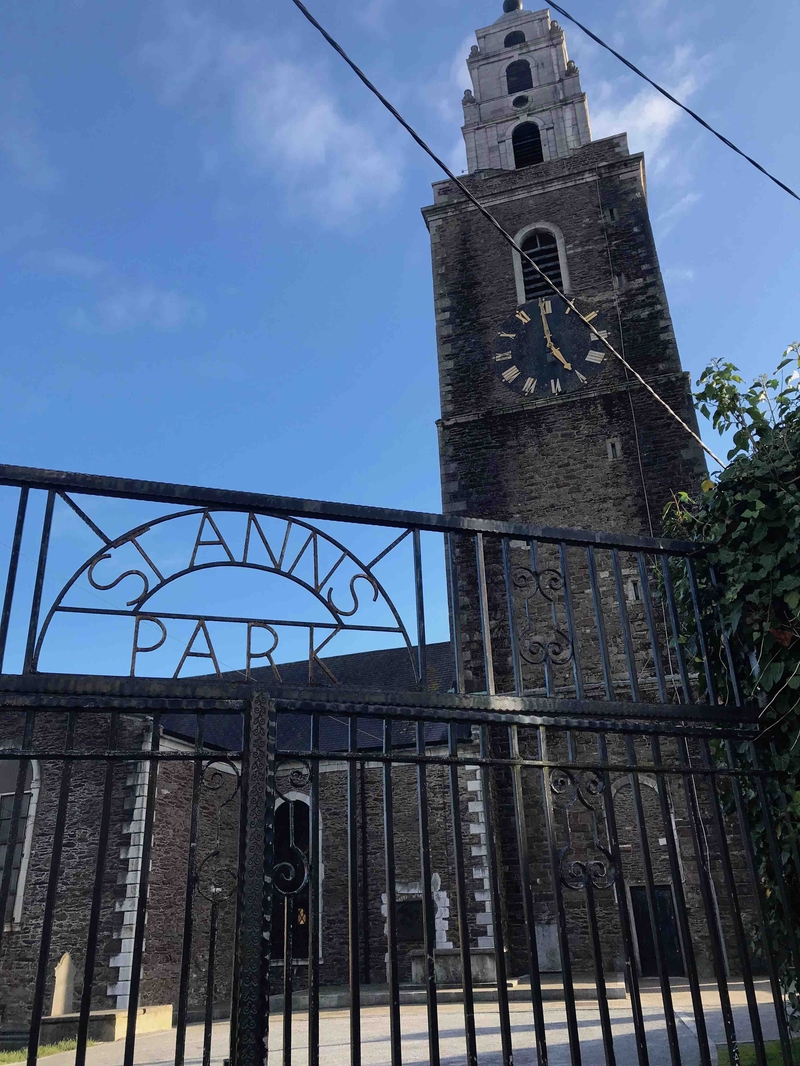
1 Cork centre is effectively an island bounded by the North and South Channels of the River Lee. Cross the former by the footbridge to Pope’s Quay and take steep Widderlings Lane up to Shandon, home to the Cork Butter Exchange (we didn’t visit), a maze of characterful streets and the city’s most distinctive building – the Georgian St Anne’s Church with its distinctive 11ft salmon weather vane atop a spire atop a tower.
The Shandon bells are world famous, immortalised in song; you can climb 132 steps to the belfry and inspect the workings of the ‘Four Faced Liar’ clock, so called because for various reasons the time may not appear to correspond perfectly on each face.
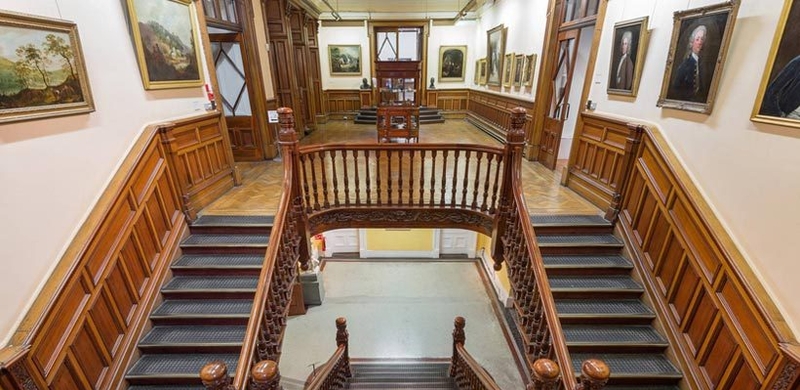
2 It doesn’t have to be a rainy day, not uncommon in Cork, to tempt you into the Crawford Municipal Art Gallery, even if it’s only for a coffee in its excellent cafe. But it would be wrong to neglect its eclectic collection of artworks. Alongside paintings from the likes of Jack Yeats and Sean Keating check out three illuminating (sic) windows by Dublin-born Harry Clarke, among the 20th Century’s greatest artist in stained glass.
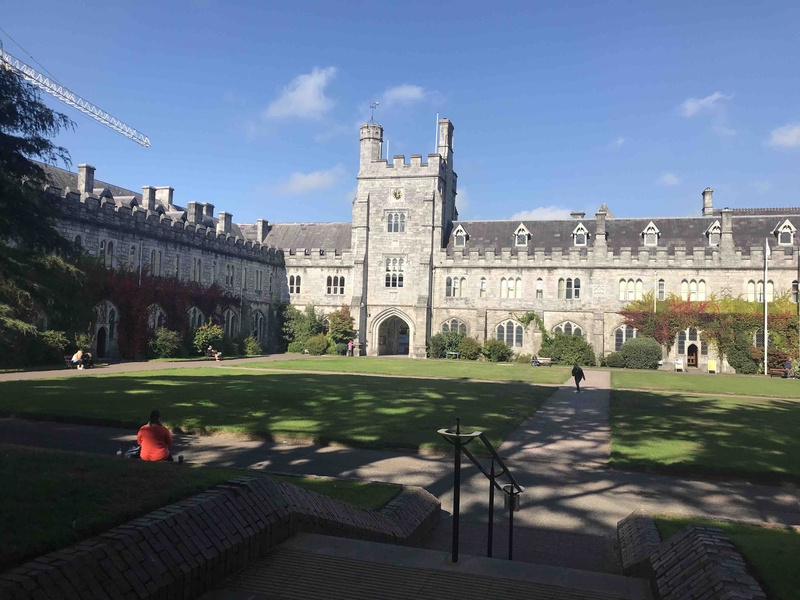
3 The campus of University College Cork (which coincidentally also boasts Harry Clarke stained glass in its Honan Chapel) is handily place next door to Hayfield Manor. Its 20,000 plus students add greatly to the nightlife of a city that can feel a little grey. Their leafy campus is a delightful place to stroll round and there’s a certain Victorian Gothic Revival grandeur to the main quadrangle.
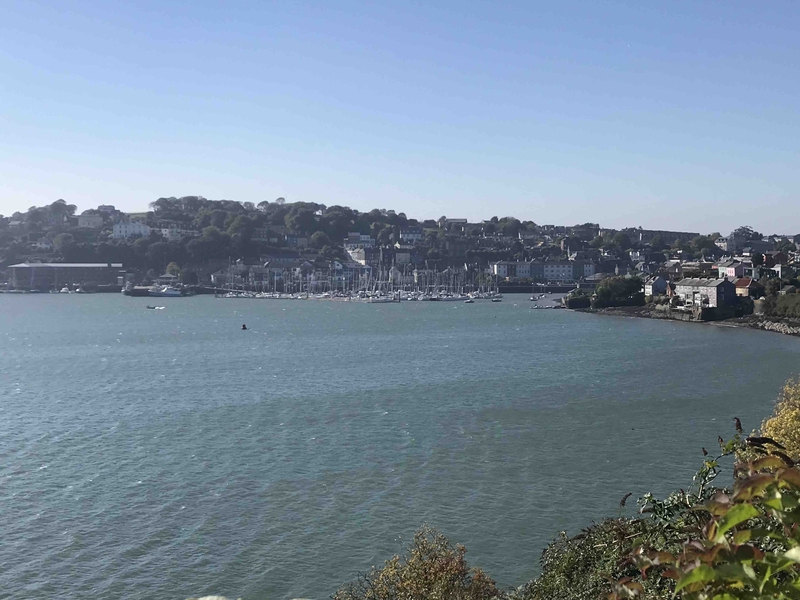
4 Take a day trip out to Kinsale, self-styled ‘gourmet capital’ of County Cork and just 18 miles south of Cork city. Affluence is obvious. There has to be a clientele for all those restaurants and wine bars; someone can afford the myriad yachts bobbing in the Marina. Walking is free and it’s a fine place to ramble, espeically along the breezy shoreline. We discovered good bookshops, the local craft beer Black’s and excellent simply prepared seafood at Fishy Fishy Cafe on Crowley’s Quay.
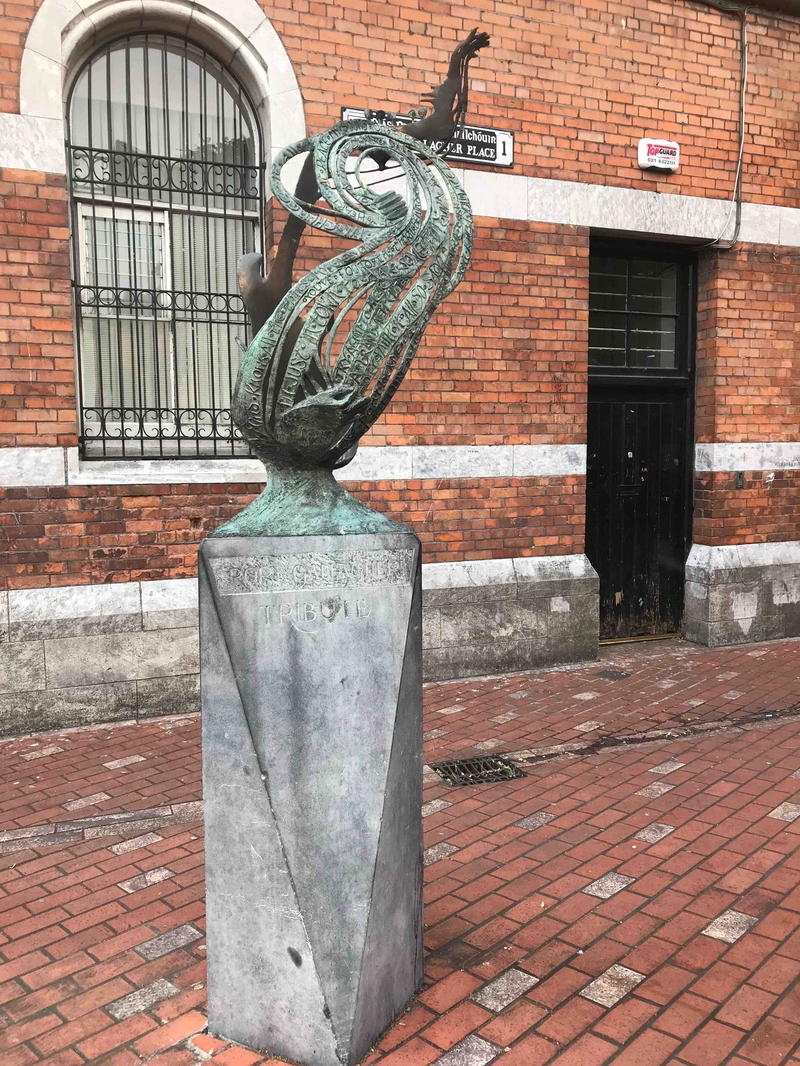
5 Finally a personal homage to a musical hero. it’s nearly a quarter of a century since the death of Rory Gallagher, a phenomenal blues rock guitarist – born in Donegal, raised in Cork, who turned down a chance to join the Rolling Stones among other career ‘wrong turns’ (or was it?) Listen to his music, especially his live performances from the Seventies and wonder why the new statue, next to a plaque on Rory Gallagher Place doesn’t quite do it justice. The City Library on The Grand Parade has an archive and Rory memorabilia on display.
Fact file
Neil was a guest of Ireland's Blue Book,whose portfolio includes many of Ireland’s best places to stay with a choice of elegant Georgian manors, stately castles, luxury hotels, top end B&Bs and designer Lodges. Also included in the collection are three of Dublin's finest Michelin star restaurants.
Aherne's Townhouse, Youghal, Co. Cork. B&B €80-€160 pp, dinner from €30. Open year round except four days at Christmas
Longueville House, nr Mallow, Co. Cork. B&B €195 per room (with dinner for two €305). Two nights’ stay with dinner on one evening €500 per room (€620 with dinner on both evenings). Closed from Jan 1-18 2019.
Hayfield Manor, Cork city. Manor Rooms: €99-€220pp. Dinner in Orchis Restaurant €69 pp (five course gourmet menu). Open year round.
He flew from Manchester with Aer LIngus , who also arranged car hire.
To ensure he caught the early service to Cork Neil stayed overnight at the Manchester Piccadilly Travelodge at 31 Piccadilly, Manchester M1 1LU, a five minute walk to Piccadilly Rail Station with its links to Manchester Airport. Standard prices here start from £69; he was booked into a stylish new design SuperRoom Double (£89-£109) offering added comforts such as a choice of firm or soft hypoallergenic pillows, blackout curtains and mood lighting plus a Hansgrohe Raindance 3jet adjustable shower and a Lavazza A Modo Mio fresh capsule coffee machine. Well worth the premium.





